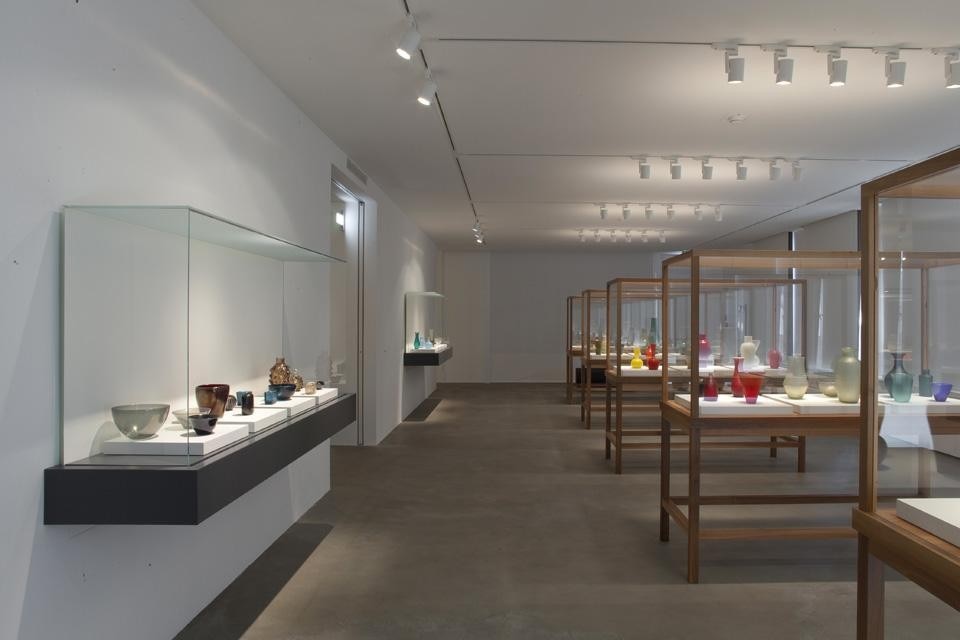There is therefore much more than a question of organisation behind the decision to establish a new centre for exhibitions and specialist studies on glass in the ex-boarding school of the Fondazione Giorgio Cini, which is currently presenting the most extensive show ever of glassworks by Carlo Scarpa, and has a packed line-up of exhibitions, all on glassmaking in the twentieth century. Drawing on the expertise of an excellent committee of specialists, the project aims to develop and set up, in conjunction with the Fondazioni Cini — which houses a study centre complete with a specialised library — a glasswork archive, as well as conferences and fellowships related to the subject.
Curator Marino Barovier has been tracking glass pieces by Carlo Scarpa for over twenty years. In 1991, his team held an initial exhibition displaying a small number of pieces, to the general astonishment of the general public, who then initiated a discovery of this facet of the Venetian maestro.
This exhibition was followed by an extensive study with Venini in Murano, which lead, in 1997, to an exhibition in Brescia, and arrived at the present day with the definitive consecration that opens this kind of "Kunsthalle for glass". The space will be supported by the Pentagram Stiftung Foundation, which will present exhibitions and artists with the aim of "bringing glass back to the centre of the international art scene and debate".


All the designs by the Venetian maestro can now be seen under a new light beneath the beam of the extensive research made known through this exhibition


The works documented for the legendary building of the new station at Florence and for numerous post offices in the mid-1930s brought Scarpa into contact with leading architects, while simultaneously leading him to reflect on the design and application of artificial light in architecture. Just by knowing about these early and previously unpublished experiences, the visitor can understand the continual exploration that Scarpa made in the body of architecture that he subsequently created: walls and ceilings that incorporate and assimilate lighting needs, not only for the usual functional reasons but also when necessary further contributing to the spatial "comment". Artificial light becomes a rational object that reappears in all manner of design projects.



Technology and design for innovative washrooms
Fumagalli, a leader in the washroom industry, offers innovative and customizable solutions, combining design, efficiency and sustainability for contemporary and functional environments.


